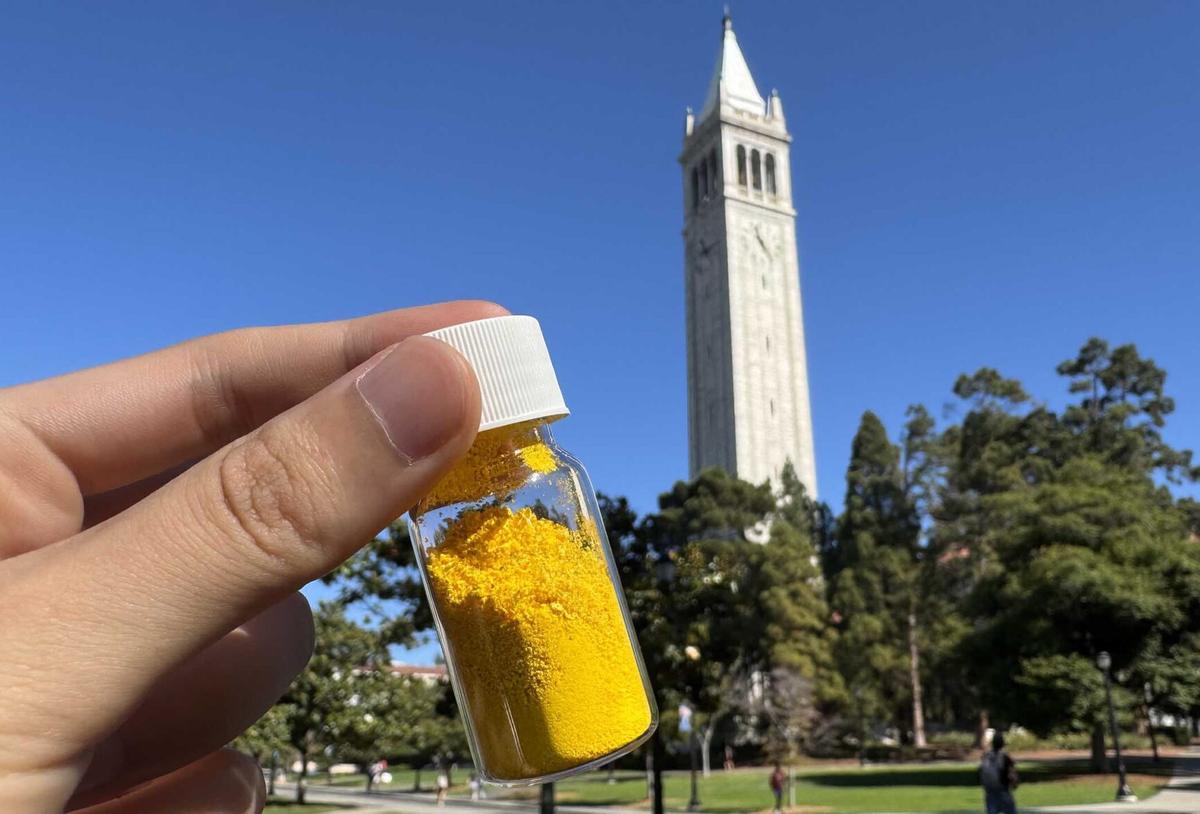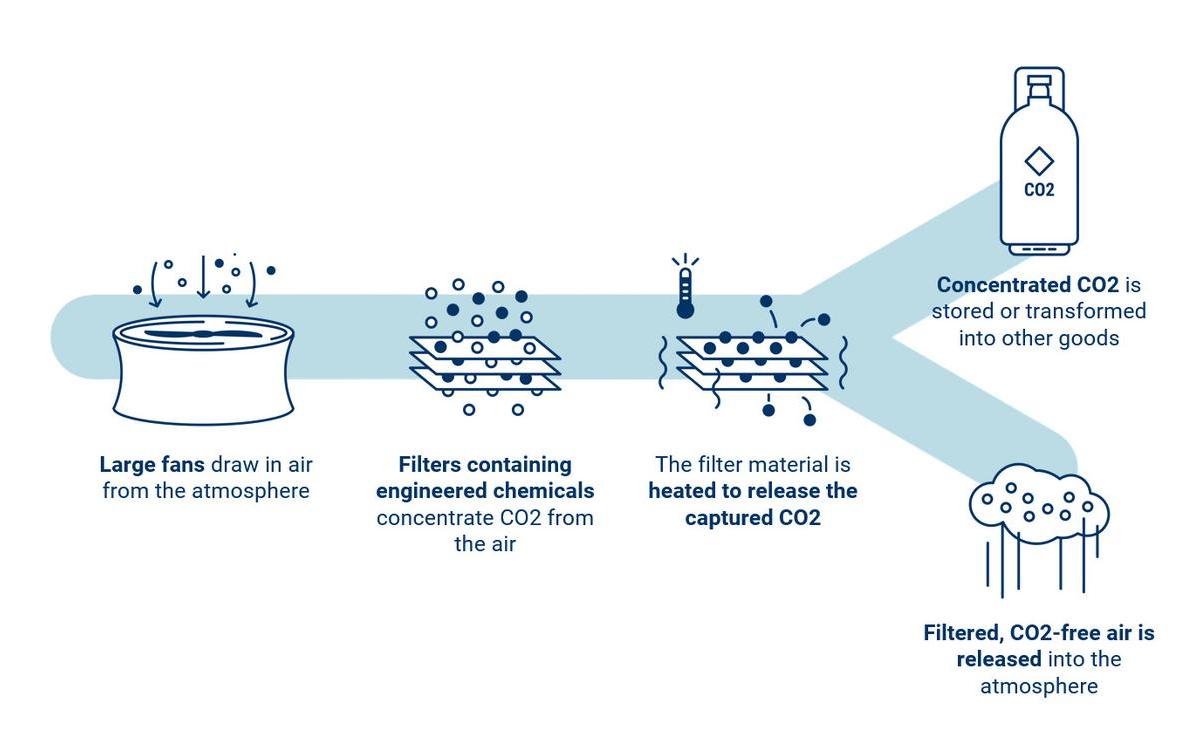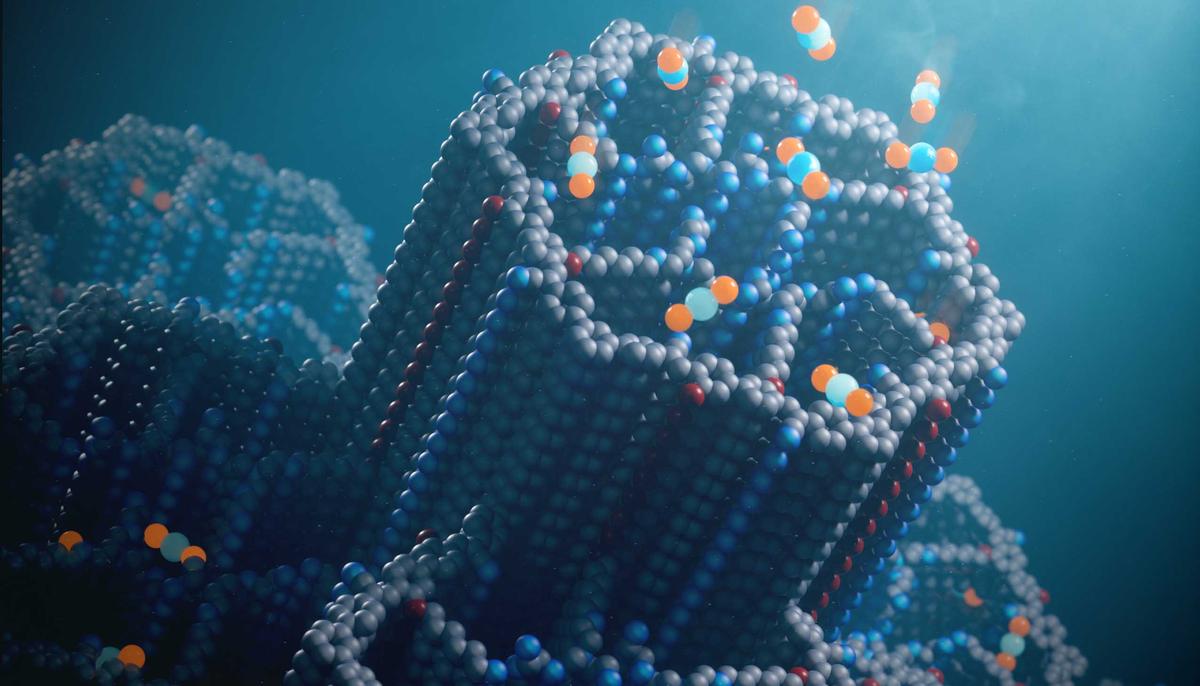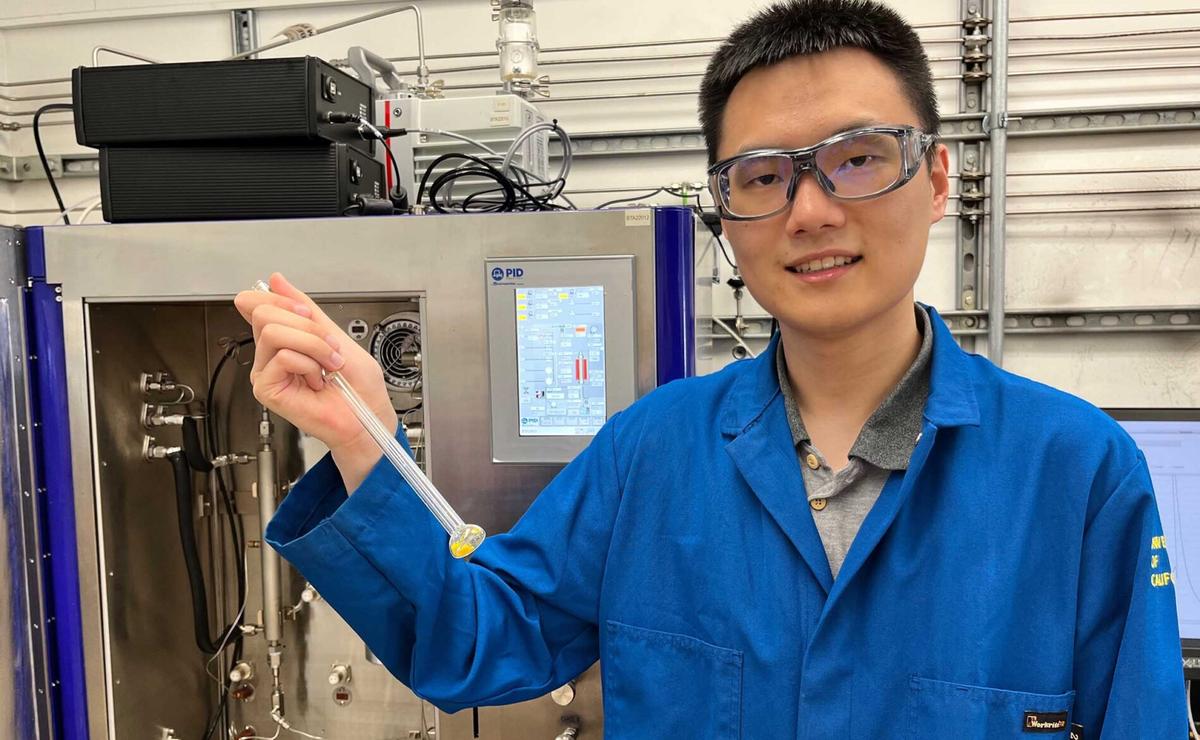Scientists in California have created a new material that can remove large amounts of carbon dioxide (CO2) from the air. The fluffy yellow powder works faster than other materials and can be used over and over again. The new material could play an important part in the fight against climate change.
Carbon Dioxide in the Air
Carbon dioxide is a gas that’s naturally found in the air. But human activity, especially the burning of fossil fuels, has greatly increased the amount of CO2 in our atmosphere. This buildup of CO2 is one of the main causes of global warming. To deal with this problem, scientists say large amounts of CO2 must be removed from the atmosphere.
Even though there’s too much carbon dioxide in our atmosphere, CO2 is just a small part of the gases that make up air. That makes it tricky to remove. If you could somehow take a bag of air, split it into the different gases that make it up, and put those gases into 2,500 tiny bags, only one of those tiny bags would have carbon dioxide in it.

(Source: Zihui Zhou, UC Berkeley .)
Currently, many people around the world are working on ways of removing carbon from the air and storing it. This is often called Direct Air Capture (DAC).
DAC technology is still being developed. But normally during the process, air is pulled across a material that can remove CO2 from it. One common material is limestone. Later, the material is heated to carefully release the CO2 so it can be stored safely underground. But the current methods of doing this are expensive and don’t capture much CO2.

(Source: Based on work by Bostonla [CC BY 4.0], via Wikimedia Commons.)
COF-999, the new material created by scientists at UC Berkeley, is a different story. Under a powerful microscope, the yellow powder looks like it’s made of tiny balls. Each tiny ball has an incredible number of holes in it. These holes allow air to pass through the balls.
Attached to these balls are lots of “amines”. An amine is a special chemical mixture related to ammonia. The amines are great at grabbing carbon dioxide molecules from the air and holding onto them.

(Source: Chaoyang Zhao, via UC Berkeley .)
To test COF-999, the scientists filled a small tube (about as big as a drinking straw) with the powder. They then piped air from outside their lab through the tube for 20 days. Though there was CO2 in the air outside, the air that came out of the tube had no carbon dioxide at all.
The discovery was exciting for the scientists. “I see the solution to the climate problem right there, in our hands,” said one of the scientists, Dr. Omar Yaghi.
COF-999 has many advantages. It captures CO2 about 10 times faster than other DAC materials. The researchers say that half a pound (230 grams) of the powder can pull as much CO2 from the air as a tree can. But unlike trees, COF-999 can capture CO2 even when it’s dark outside.
To get COF-999 to release the carbon, it just needs to be heated to around 140ºF (60ºC). That’s much cooler than most other DAC materials, meaning it will take less energy to collect the CO2.

(Source: Robert Sanders, UC Berkeley .)
The materials needed to make COF-999 don’t cost much. Perhaps most importantly, COF-999 can be re-used over and over again. The scientists have already tested re-using the material up to 300 times. They believe it could probably be re-used thousands of times.
The researchers are still working on COF-999, and hope that soon it will be able to remove twice as much carbon as it does now.
The next big challenge is figuring out how to use COF-999 in a direct air capture system. The machine will have to be designed so that the powder won’t blow away when air is pulled through the machine. The scientists believe COF-999 will be ready to use in DAC systems in about two years.
Did You Know…?
The discovery of COF-999 didn’t just happen. Graduate student Zihui Zhou spent years doing hundreds of experiments, testing materials with different kinds of structures before the researchers finally came up with COF-999.
